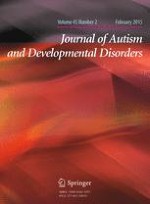01-02-2015 | Original Paper
Eyeblink Conditioning: A Non-invasive Biomarker for Neurodevelopmental Disorders
Gepubliceerd in: Journal of Autism and Developmental Disorders | Uitgave 2/2015
Log in om toegang te krijgenAbstract
Eyeblink conditioning (EBC) is a classical conditioning paradigm typically used to study the underlying neural processes of learning and memory. EBC has a well-defined neural circuitry, is non-invasive, and can be employed in human infants shortly after birth making it an ideal tool to use in both developing and special populations. In addition, abnormalities in the cerebellum, a region of the brain highly involved in EBC, have been implicated in a number of neurodevelopmental disorders including autism spectrum disorders (ASDs). In the current paper, we review studies that have employed EBC as a biomarker for several neurodevelopmental disorders including fetal alcohol syndrome, Down syndrome, fragile X syndrome, attention deficit/hyperactivity disorder, dyslexia, specific language impairment, and schizophrenia. In addition, we discuss the benefits of using such a tool in individuals with ASD.
